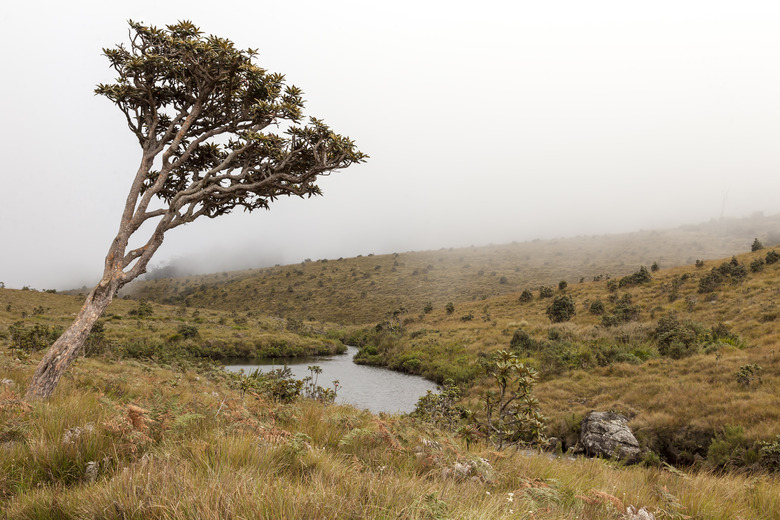Abiotic Characteristics For Temperate Grasslands
Grasslands can be found on almost every continent, and as their name suggests, they are the areas where the most plentiful form of vegetation is grasses. Temperate grasslands are also known as prairies or steppes, and while these temperate grasslands have a milder climate than the tropical grasslands known as savannas, the abiotic factors of this biome make it suitable for plants such as grasses instead of trees.
Rainfall
Rainfall
Rainfall is one of the key abiotic factors that contributes to the appearance and ecological makeup of the temperate grasslands. Yearly precipitation needs to be higher than that found in drier grasslands and deserts, but too much precipitation can encourage the growth of trees and result in the forestation of the grasslands.
The temperate grasslands can be found in areas that receive between 10 and 30 inches of rain each year. Most of this rainfall typically happens in one part of the year, resulting in drought conditions for several months. Grasses are typically more capable of surviving these conditions than trees.
Temperature
Temperature
Most of the grasses of a temperate grassland are short, some little more than a few feet tall, but with root systems that can extend many times that length beneath the ground. This is an adaptation to temperature; the temperate grasslands can have a wide range of temperatures, but will generally include a hot growing season and a cold dormant period. Grasses are kept shorter because of the short growing season, followed by freezing cold temperatures that cause the fauna to die back to its roots. The extensive root system on the grasses allows the plants to survive the cold to grow and produce seeds during the warm spring and summer months.
Temperate grasslands can be classified by temperature: prairies are more mild with longer grasses, while steppes have a colder, harsher climate and shorter grasses.
Fire
Fire
During the hot, dry seasons characteristic of the temperate grasslands, fires are common. These fires can quickly sweep across large areas, leaving little but ash in their wake. While trees cannot typically regrow complicated structures after being destroyed by fires, grasses and wildflowers are capable of regrowing from their complex root structures. Any tree seedlings that might take root in these areas are commonly destroyed by fires, keeping the area open for shorter grasses. Fires also return nutrient-rich ash to the soil, increasing fertility and making it possible for the regrowth of damaged flora.
Soil
Soil
The soil of the temperate grasslands is fertile and nutrient-rich, able to support the many grasses and wildflowers that grow there. The soil is stabilized by the extensive root systems of the grasses, and as nutrients are continuously renewed by the death and decay of these grasses, this abiotic factor is greatly enhanced by the living organisms it shares the environment with. Also contributing to the rich grassland soil is the extensive root systems of the grasses; during the cold, dormant period, pieces of the grasses' roots can die and decay while the grass itself is still able to grow from the remaining parts.
The temperate grasslands are also home to some of the largest grazing animals on Earth, including bison and elk. The waste from these large herds of animals — as well as the decomposing remains of the dead — also contribute to the rich soil.
Cite This Article
MLA
Durkee, Debra. "Abiotic Characteristics For Temperate Grasslands" sciencing.com, https://www.sciencing.com/abiotic-characteristics-temperate-grasslands-8451088/. 22 November 2019.
APA
Durkee, Debra. (2019, November 22). Abiotic Characteristics For Temperate Grasslands. sciencing.com. Retrieved from https://www.sciencing.com/abiotic-characteristics-temperate-grasslands-8451088/
Chicago
Durkee, Debra. Abiotic Characteristics For Temperate Grasslands last modified March 24, 2022. https://www.sciencing.com/abiotic-characteristics-temperate-grasslands-8451088/
